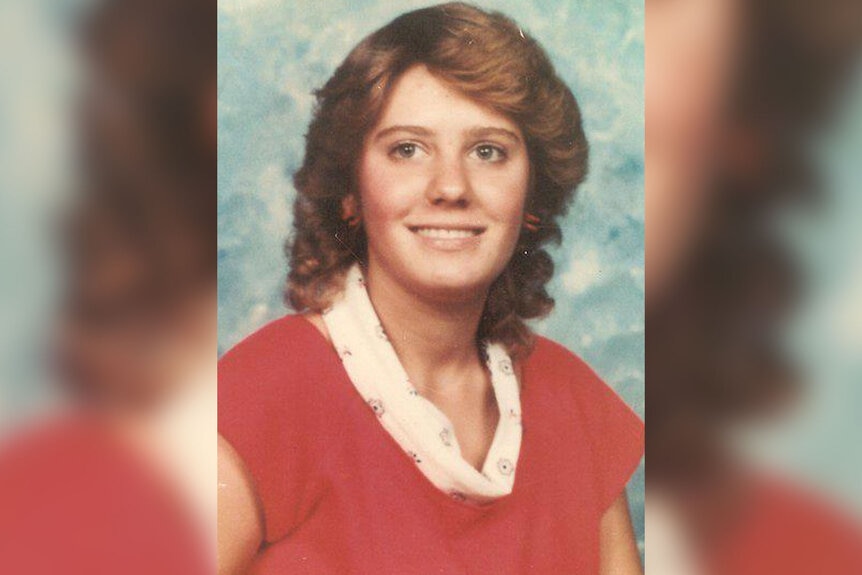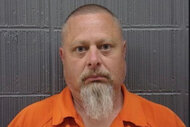Create a free profile to get unlimited access to exclusive videos, breaking news, sweepstakes, and more!
DNA Clears Woman Of Sister’s Brutal 1984 Murder After Spending Years Living Under A Cloud Of Suspicion
Authorities believe they’ve identified a suspect—now deceased—in the killing of Reesa Trexler, whose naked body was found riddled with stab wounds on June 15, 1984 in the spare room of her grandparent’s home.

Authorities in North Carolina believe they have discovered the man who stabbed 15-year-old Reesa Trexler to death at her grandparents’ home in 1984 and have officially cleared Trexler’s sister—who had long lived under a cloud of suspicion in the small community—of any involvement in the crime.
Salisbury Police did not identify the suspect—who is now deceased—and only described him as a black male who was in his 40s at the time the murder and had worked near the crime scene, according to a press conference Tuesday.
Salisbury Police Sgt. Travis Shulenburger also said the suspect had a criminal history including assault with a deadly weapon, which he had served time for before his death, but declined to provide the individual’s name because the case would never have the chance to go through the court system.
Trexler was discovered dead in her grandparent’s home on June 15, 1985.
“Reesa’s grandparents left the home separately,” Shulenburger said. “After being gone about an hour, her grandfather returned home to find Reesa deceased on the floor of a spare bedroom in the home.”
She was naked and had suffered multiple stab wounds, the most severe of which had severed the teen’s spinal cord.
Multiple witnesses at the time had reported seeing a black male in the area; some even told police the man had been running or fleeing the area, police said. Lab test results also showed that DNA from an African-American man had been found on Trexler’s body.
However, for years, members of Trexler’s family, including her own sister Jodi Laird, had been considered possible suspects in the brutal crime.
Laird went on Dr. Phil in 2018 to try to clear her name—even taking and passing a polygraph on the show.
Laird told show producers she never understood why she was considered a suspect in her sibling’s slaying. She had been at her family’s home next door when her sister was killed.
“It had been about an hour, I had started to walk to my grandparent’s house and noticed that my grandmother’s car and grandfather’s truck were both gone and the front door was shut, so I just assumed my sister had left with one of them, which was not unusual,” she said in the show.
Laird returned back to her own house, but soon heard her grandfather screaming and ran next door to find her sister dead.
“The entire room was just covered in blood, it was horrible,” she said on Dr. Phil.
On Tuesday, Salisbury Police officially ended any speculation that Laird had been involved in the crime and said it was her interview on Dr. Phil that had spurred the department to re-examine the case.
“Jodi (Laird) was instrumental in bringing this case back to the forefront,” Shulenburger said, adding that she had been “completely exonerated.”
Investigators have determined the suspect had no connection to the Trexler family, he said.
Laird and her parents attended Tuesday’s press conference and said they were pleased there has finally been a resolution to the case.
“I just want to say how thrilled me and my family are," Laird said, according to WBTV. "It’s been a long road, something that honestly for many, many years we didn’t think would happen.”
Trexler’s mother, Vickie Oakes, said as the decades went by and the case remained unsolved she had begun to lose hope that justice would ever come.
“I just lived with the fact that it was not going to be solved,” she told the station. “So many nights laying in the bed wondering and wondering and wondering and maybe now I can sleep.”
The case was finally considered solved by police after authorities retested DNA evidence recovered from a rape kit with the help of the North Carolina state crime lab. Investigators sent a small sample to Parabon Nanolabs Inc., which was able to take the sample and use genetic genealogy to identify possible relatives of the killer.
Using genetic, genealogical and circumstantial evidence, the lab concluded the suspect was “a very strong candidate to be the unidentified male extracted DNA profile.”
Shulenburger said police then exhumed the body of the suspect and tested it against the DNA recovered from the crime scene to get a positive match.
Trexler’s family is now able to have at least some measure of closure.
“Of course, with him being deceased, I know we’ll never get all the answers that we want. But at least we have the answers that we need,” Laird said, according to WSOC-TV. “She was a wonderful person, and we miss her.”























